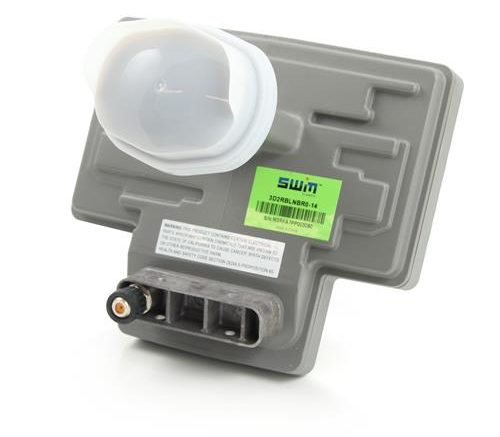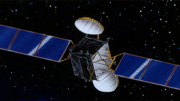This unassuming little bit of electronic gear is probably the most interesting thing to come out of DIRECTV in a long time. Its name — the Reverse Band 3 SWM-enabled LNB — isn’t exactly poetic. It doesn’t roll off the tongue. But, just because the marketing folks didn’t get their hooks into it doesn’t mean it’s unimportant. If you get one piece of DIRECTV gear this year, it should be this one.
What is an LNB, anyway?
I wrote a whole article about this not long ago, so read that one if you want a long-form explanation. The quick answer is that it’s the front part of a satellite dish, the part that actually does all the work.
This particular LNB is packed with more electronics than any LNB that has come before it. Take a look at all it does:
- Receives signals from three locations
- Receives signals from three frequency ranges
- Amplifies those signals
- Converts them down to frequency ranges that can travel over cable
….and probably the most amazing thing:
- Through continuous two-way communication, serves 13* different content streams over a single wire.
That’s a lot of work for something as small and relatively inexpensive as it is.
Hey, why the “13*?”
There’s a funny little story about how this LNB and other modern SWM-enabled LNBs function. They are designed to supply 21 different content streams. They fit all of them in the same frequency range that older SWMs fit 8. Mostly this is done because this SWM is completely digital while older ones used analog filtering that required a bigger space between the channels.
However, only DIRECTV Genie DVRs and servers can actually see streams 14-21. The previous generation was hard-wired to only see a maximum of 13 streams. So officially this LNB supports 13 streams because that’s all that can be guaranteed. In order to support 21, you either need multiple Genies (which you still can’t do) or you need to power up everything in precise order so your older receivers and DVRs are completely powered up first and your Genie is powered up second. But I digress.
What’s so special about this LNB?
This LNB receives the Ku-band signals that DIRECTV has used since 1994. It also receives the Ka-band signals that DIRECTV has used since 2005. Finally, it receives the reverse-band signals that DIRECTV has only used for a short while. Those signals allow for so much more channel capacity, it’s likely that the satellite service will never need them.
Do you need this LNB?
The original goal of this LNB was to enable 4K broadcasts. The reverse band was opened up to allow close to 1,000 4K channels to exist. Some would be locals, some nationals. The problem is, there aren’t 1,000 4K channels. Maybe some day there will be. Maybe not. To date AT&T leads the pack with three full-time 4K channels and a bunch of internet-delivered pay-per-view. Most of that content is delivered in the regular Ka band.
However, at any moment, AT&T has signaled they could move content to the reverse band. If you’re thinking futureproof, you should be thinking about this LNB.
You should also be thinking about this LNB if you think you’ll want DIRECTV’s international programming at some point. While not as well publicized as its retirement of the 119 satellite location, AT&T also plans on retiring the 95 satellite location used for today’s international programming. The Reverse Band LNB will be needed in the future at some point.
What if you need to expand beyond 13 tuners?
As with all SWM LNBs, there’s really no expanding beyond the original tuner capacity. You could put up a second dish, but really the option is to move over to a Reverse Band Legacy LNB and SWM-30. This system does require six lines from the dish but it is expandable to virtually any size you want.
AT&T has long told us that well over 99% of residential customers are satisfied with 13-tuners, which enables the 7-room Genie 2. But if you’re not one of those 99%, Solid Signal is here to help.




